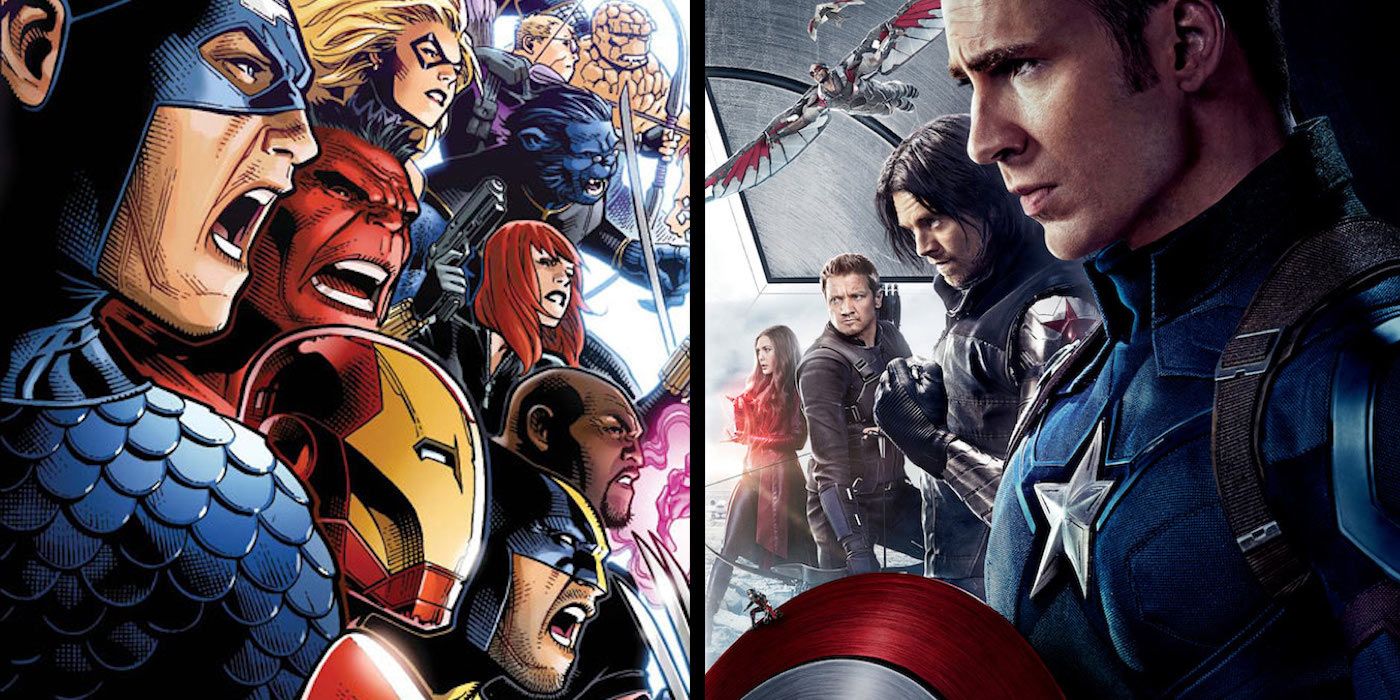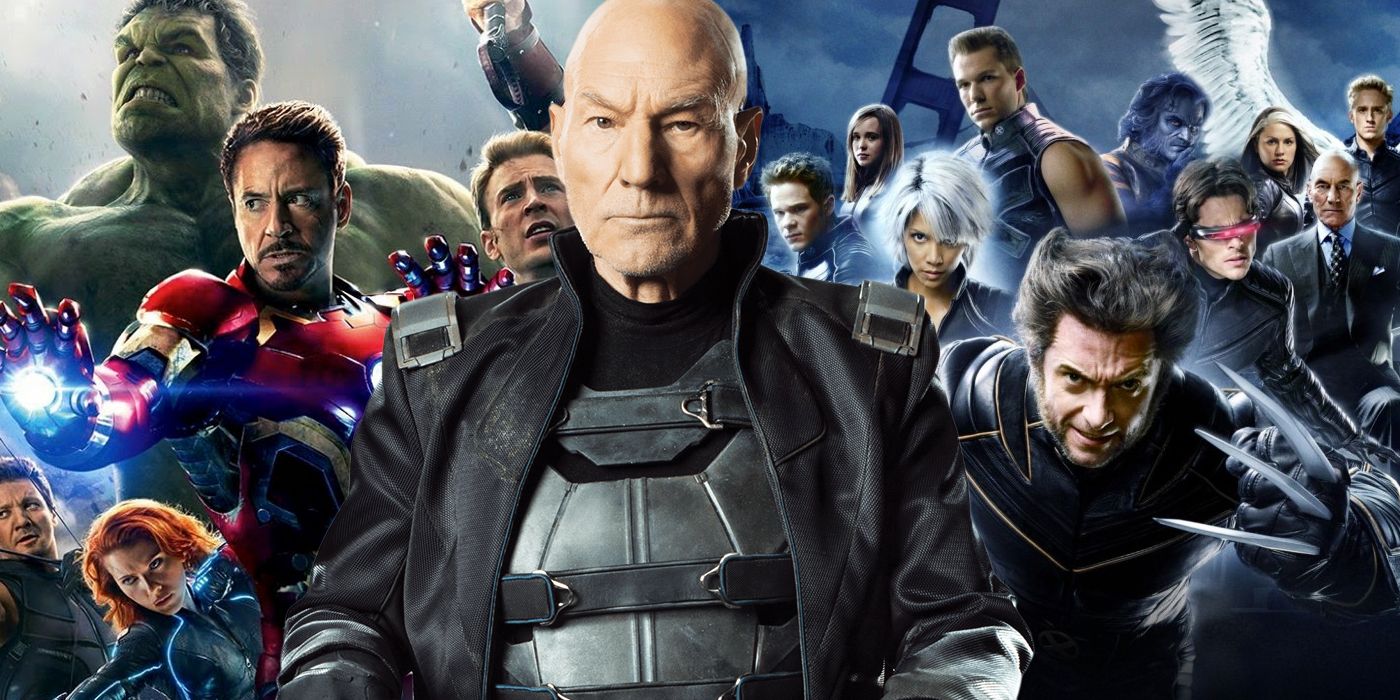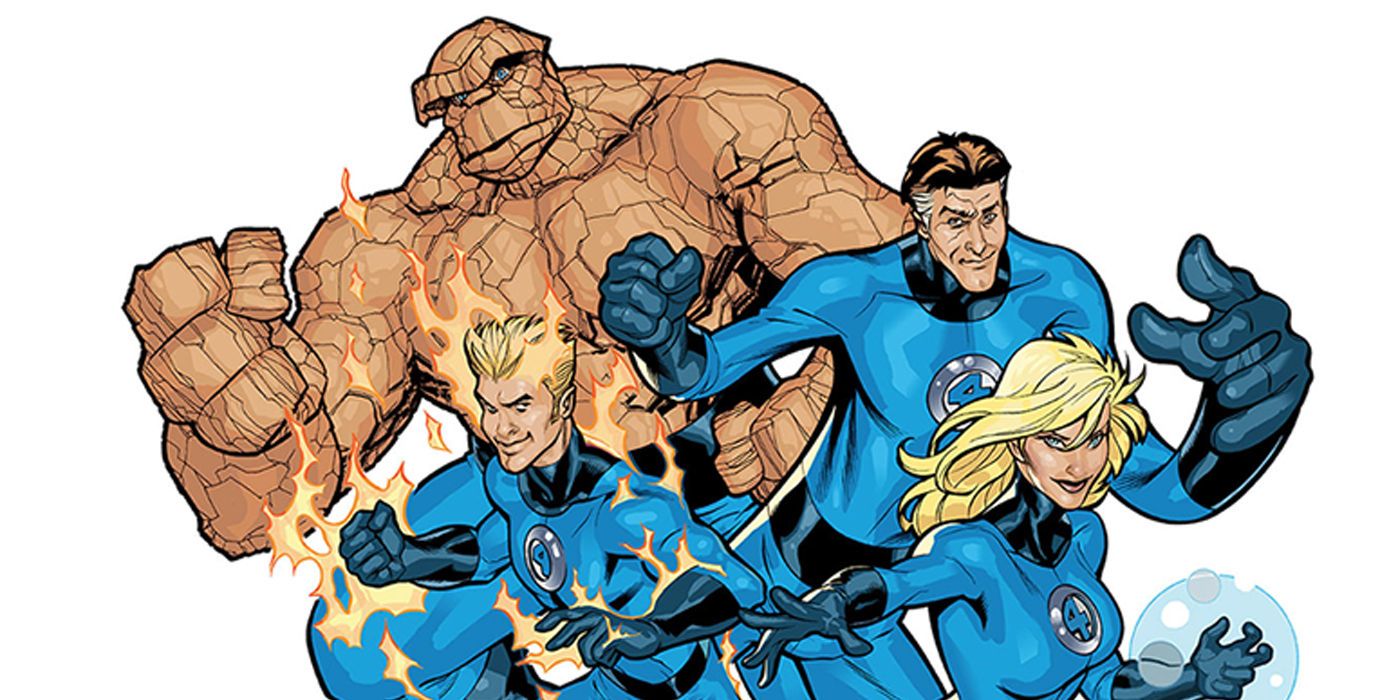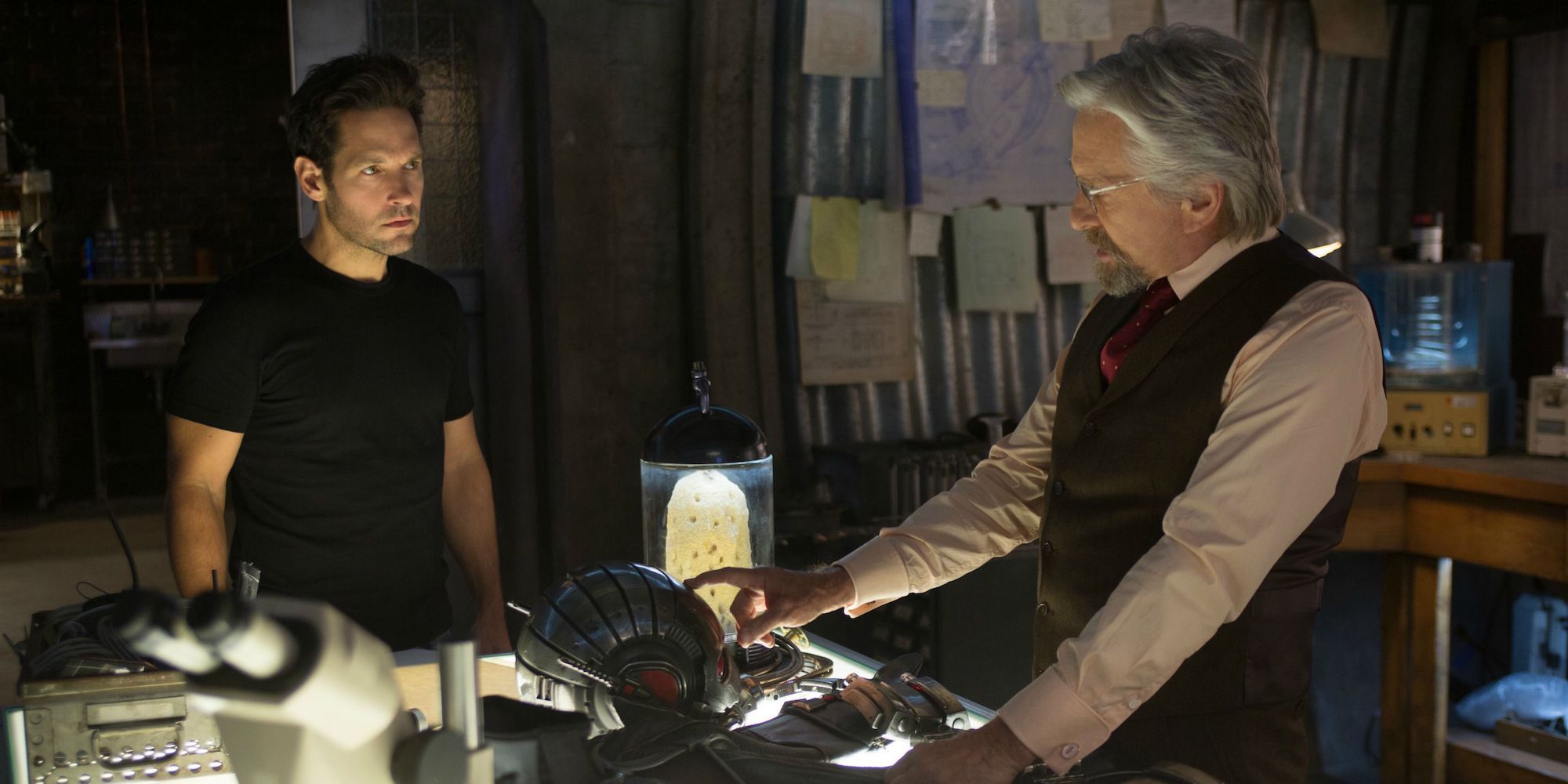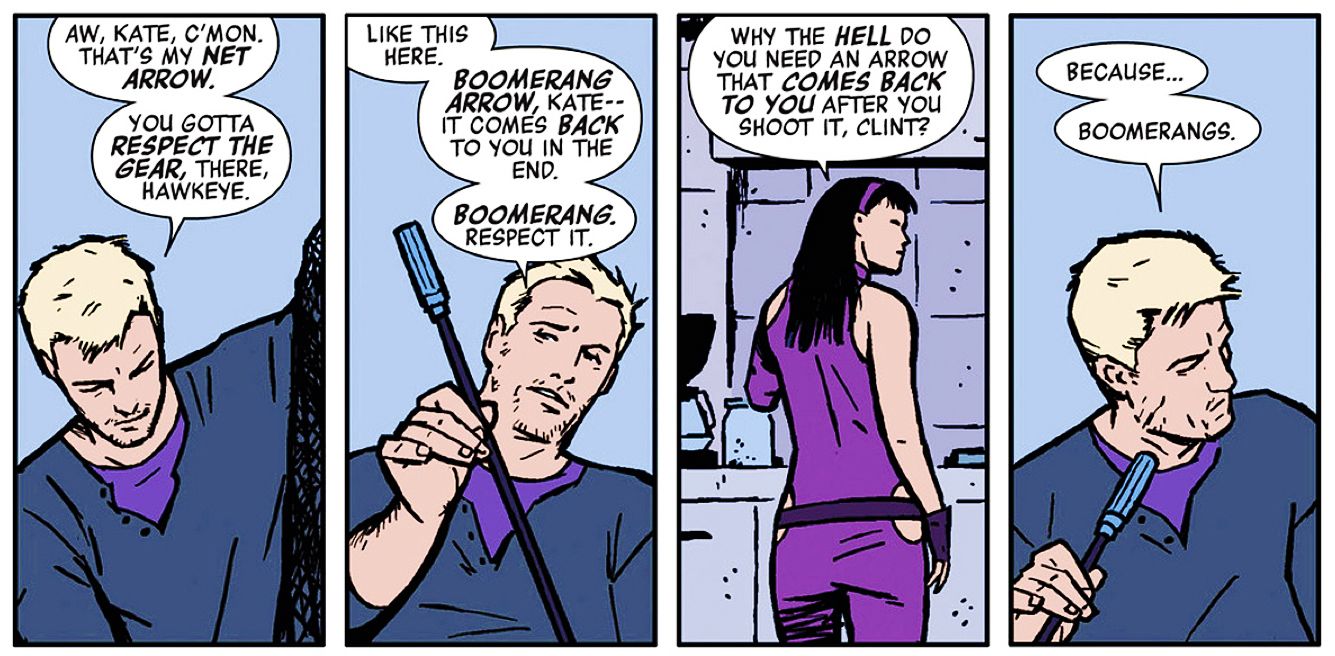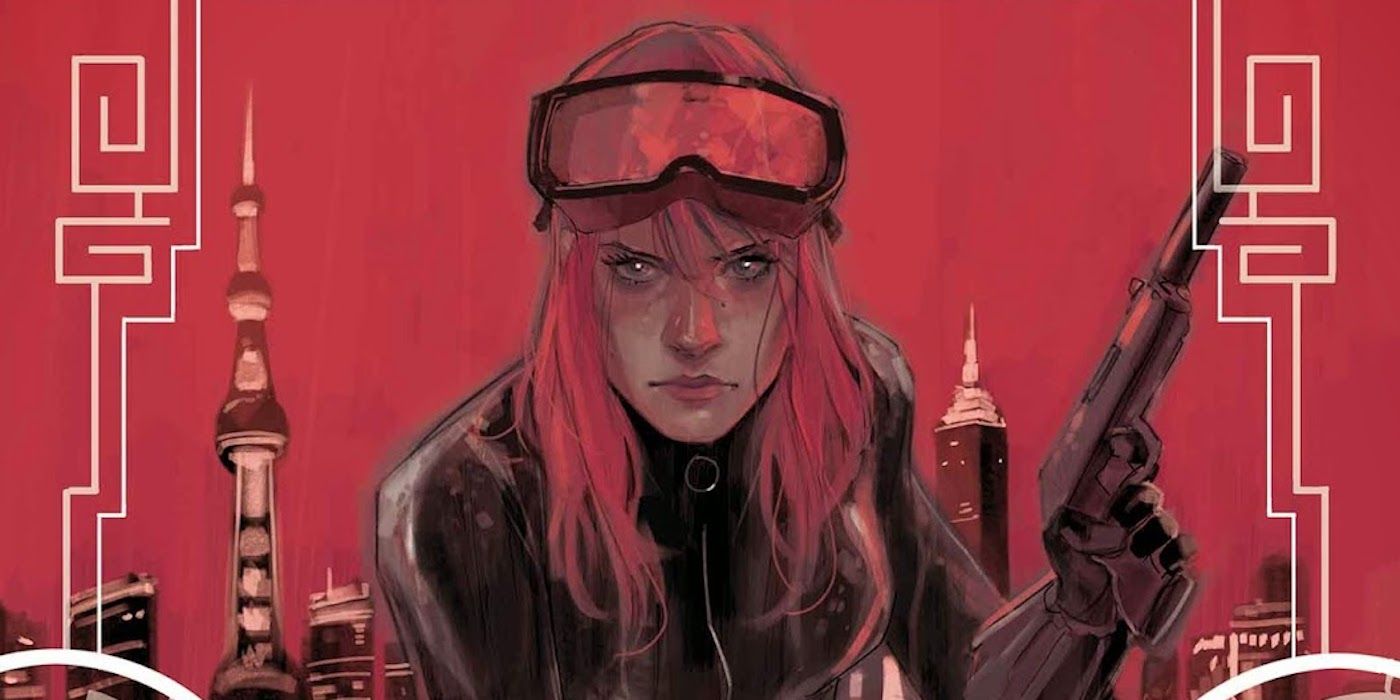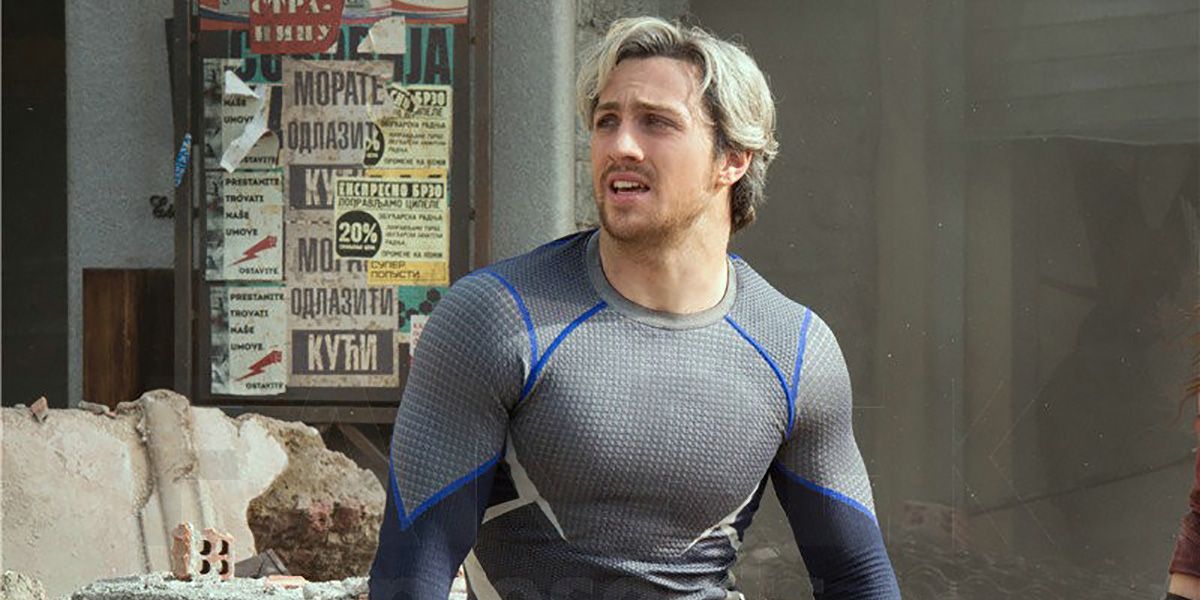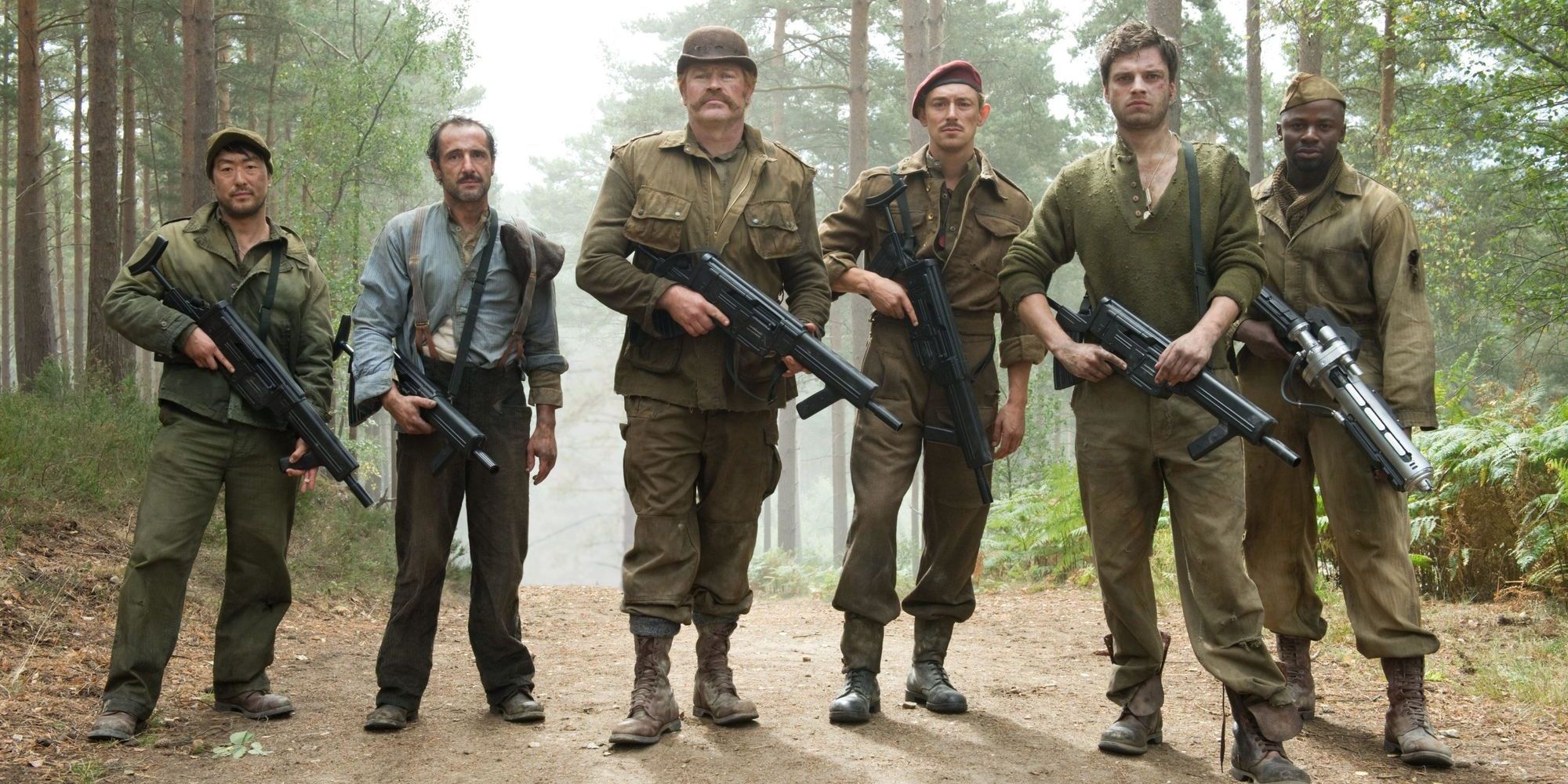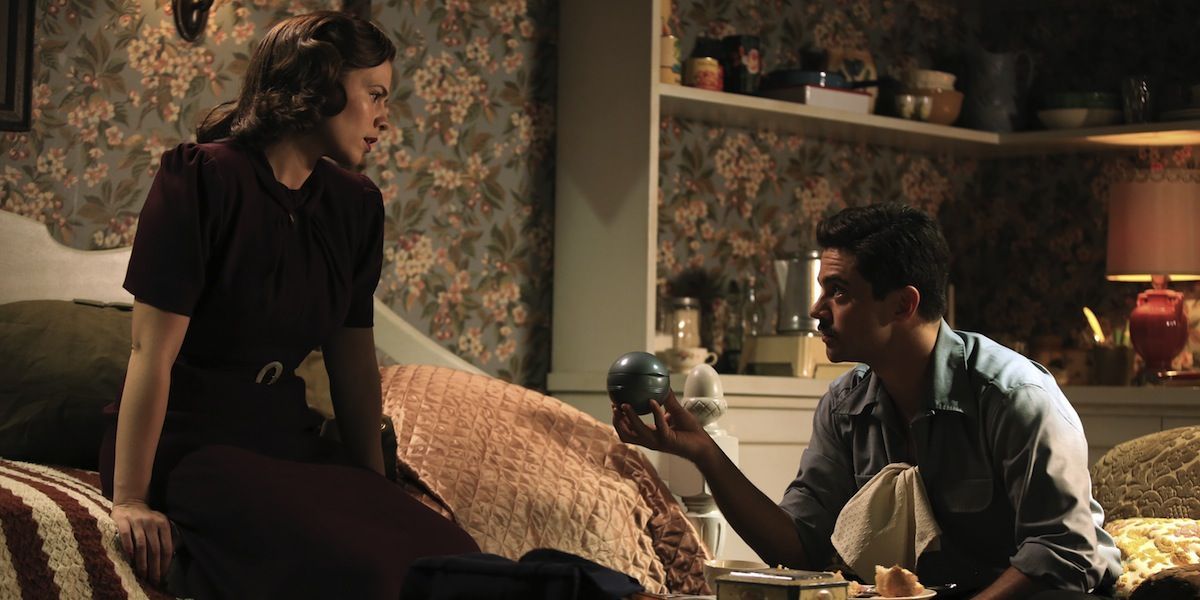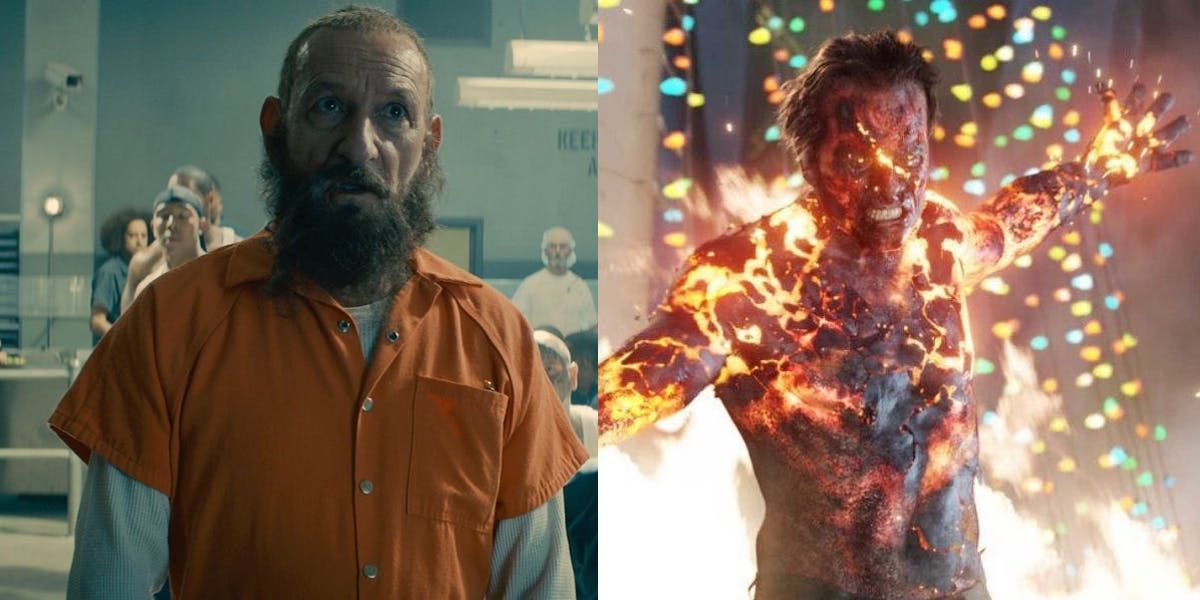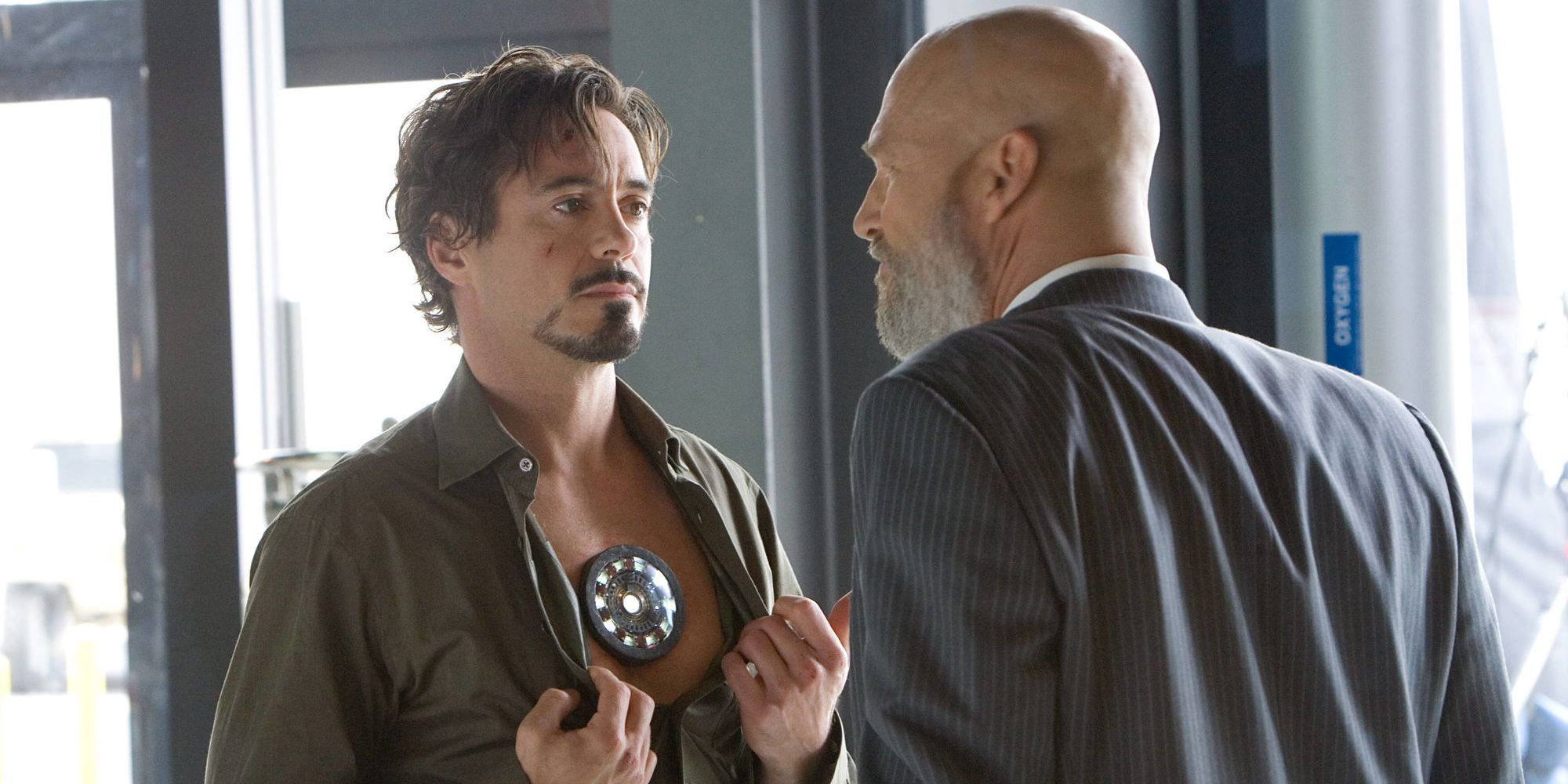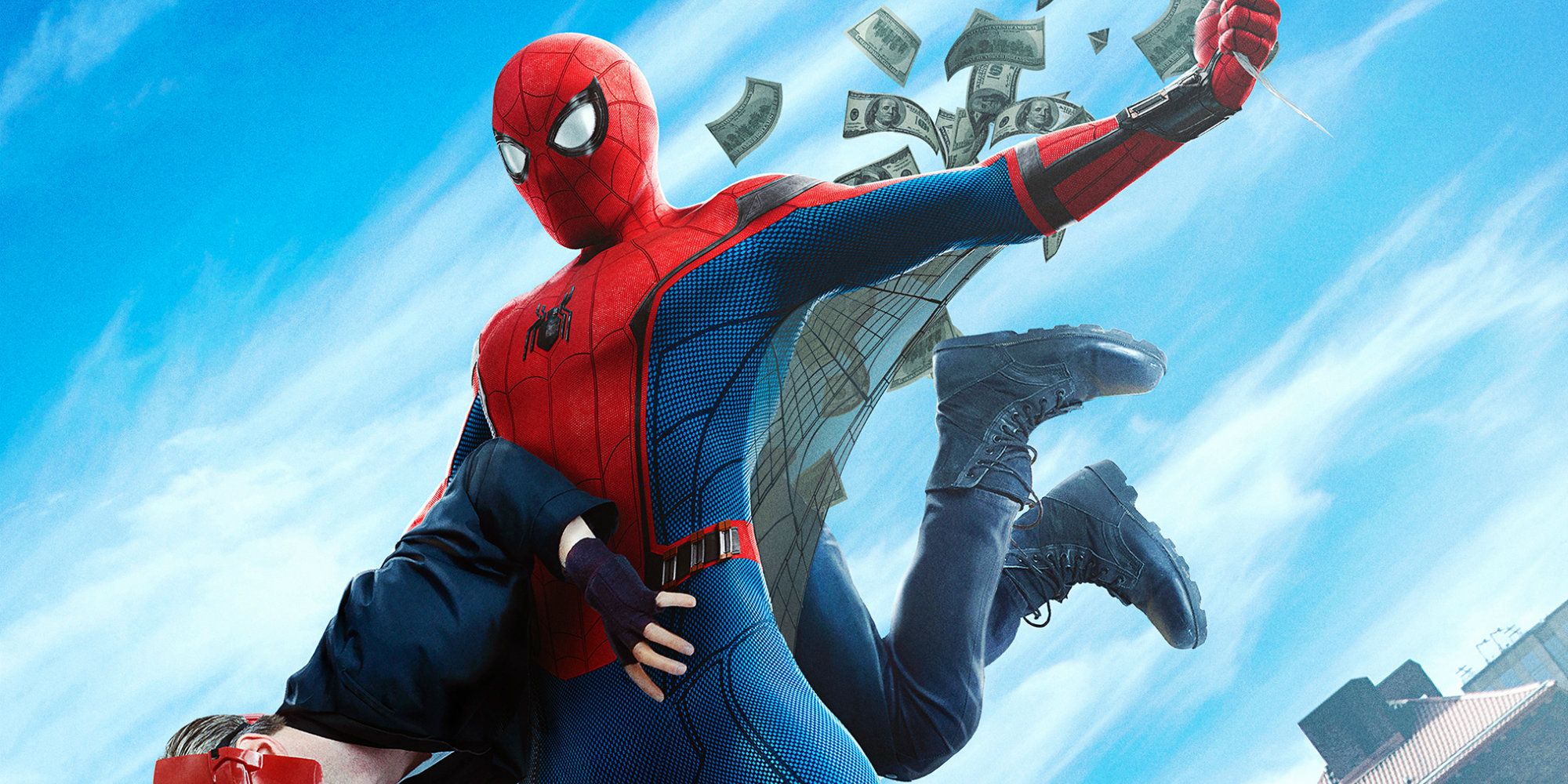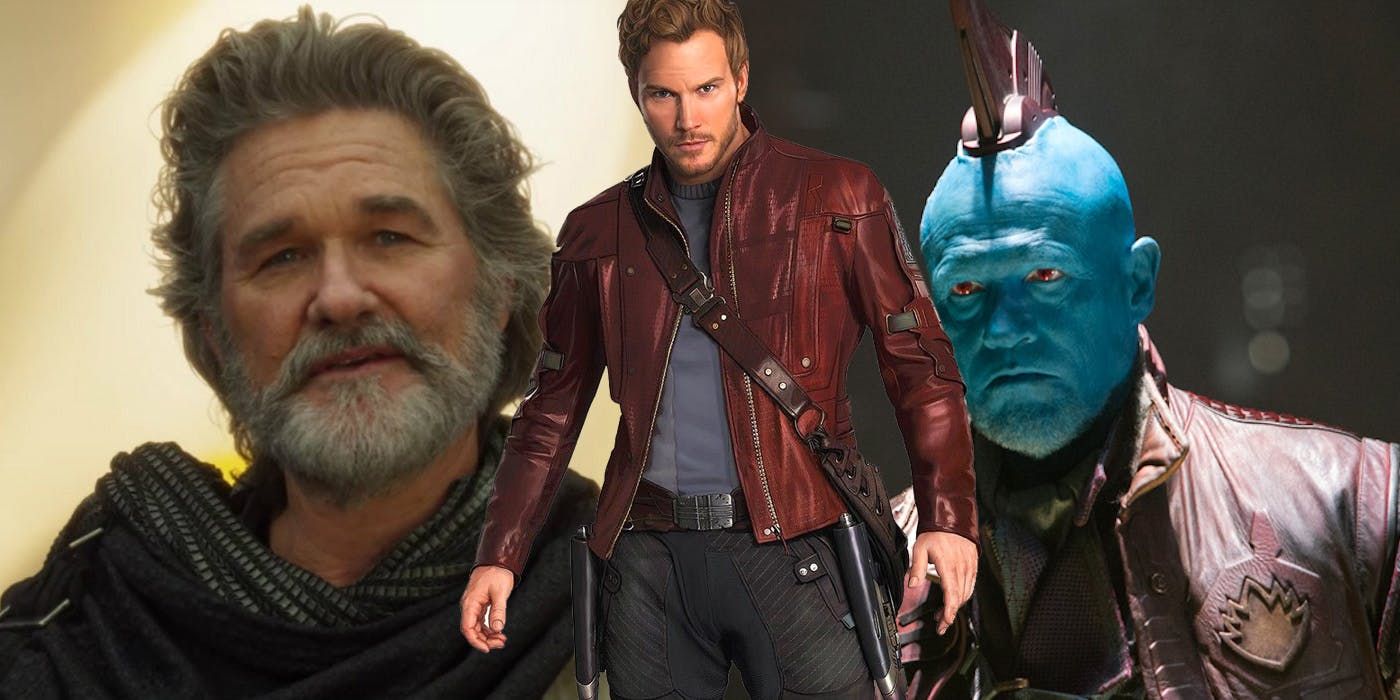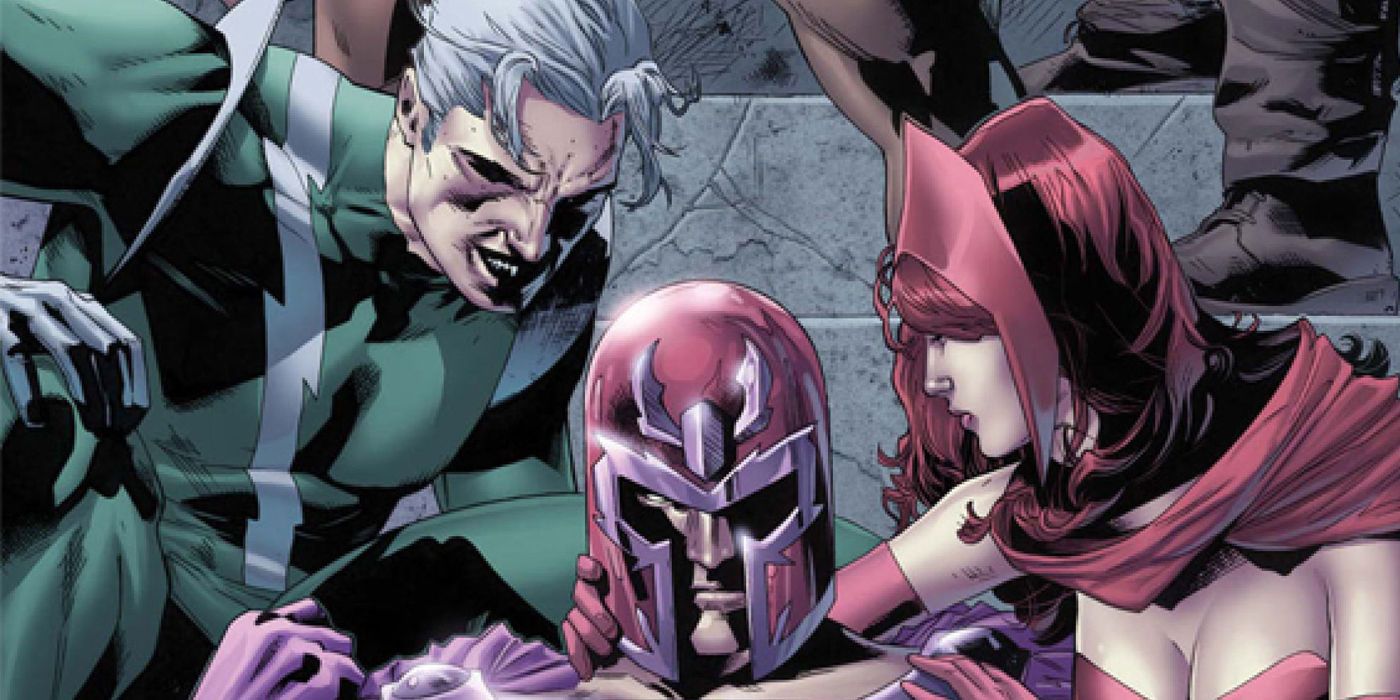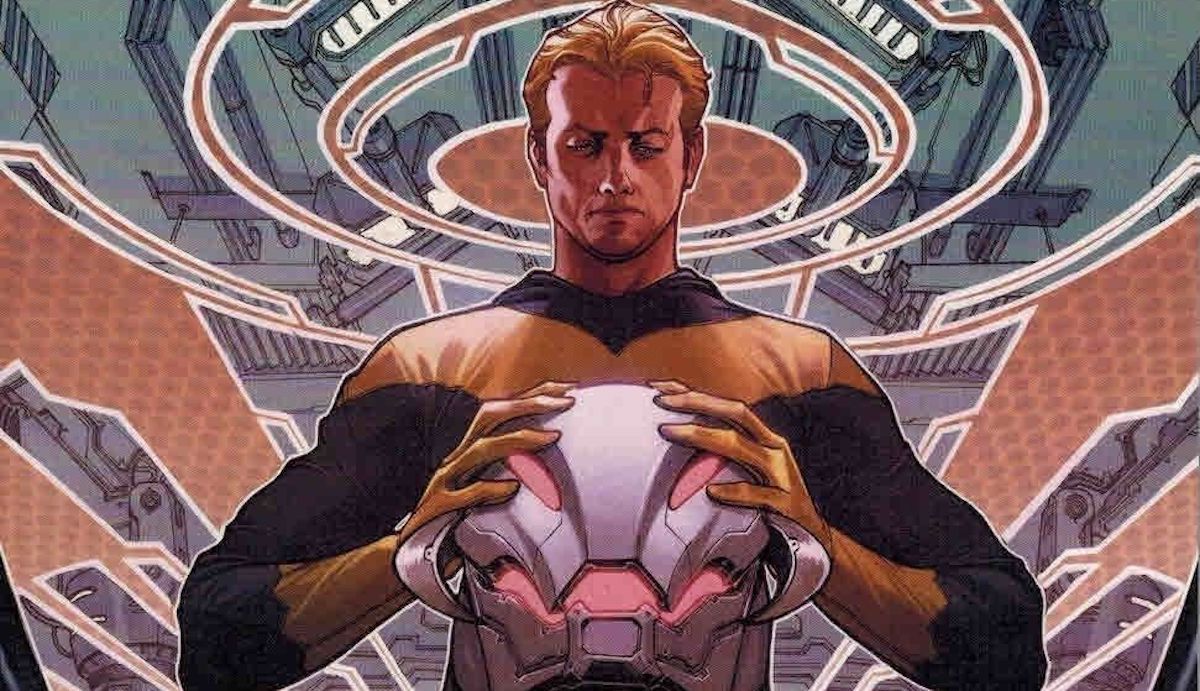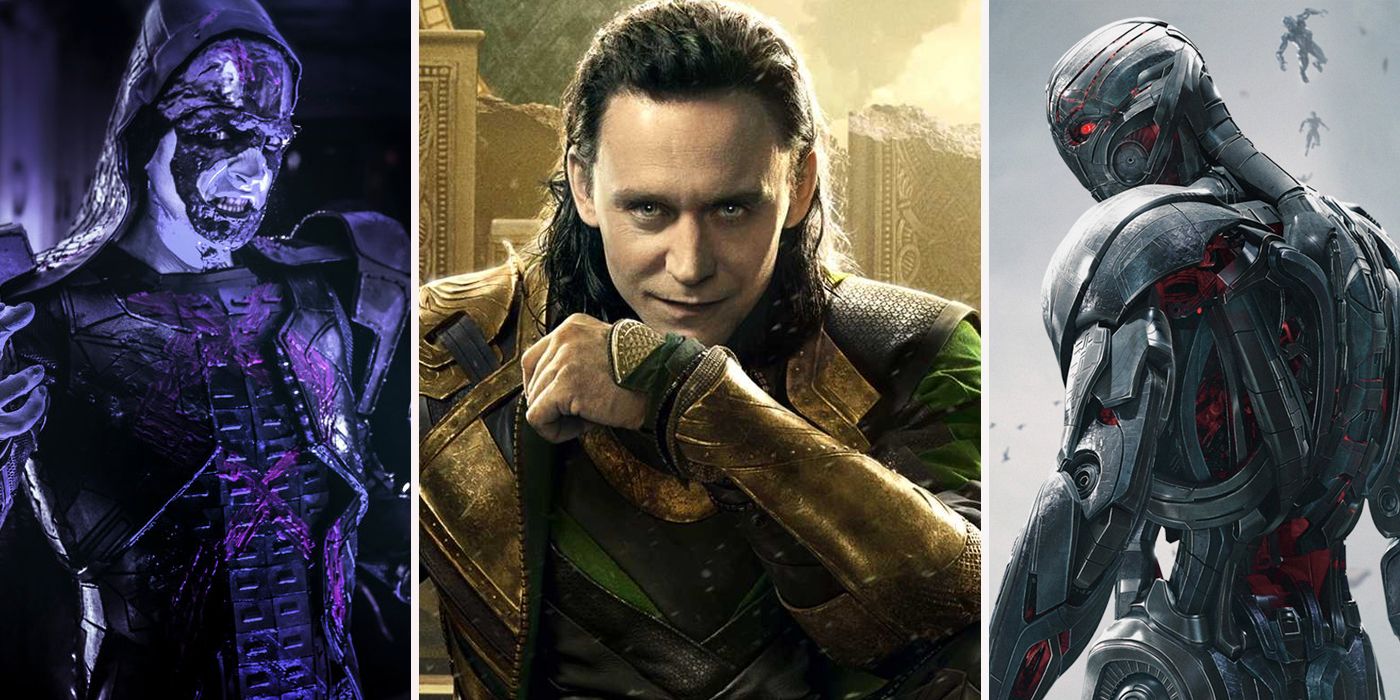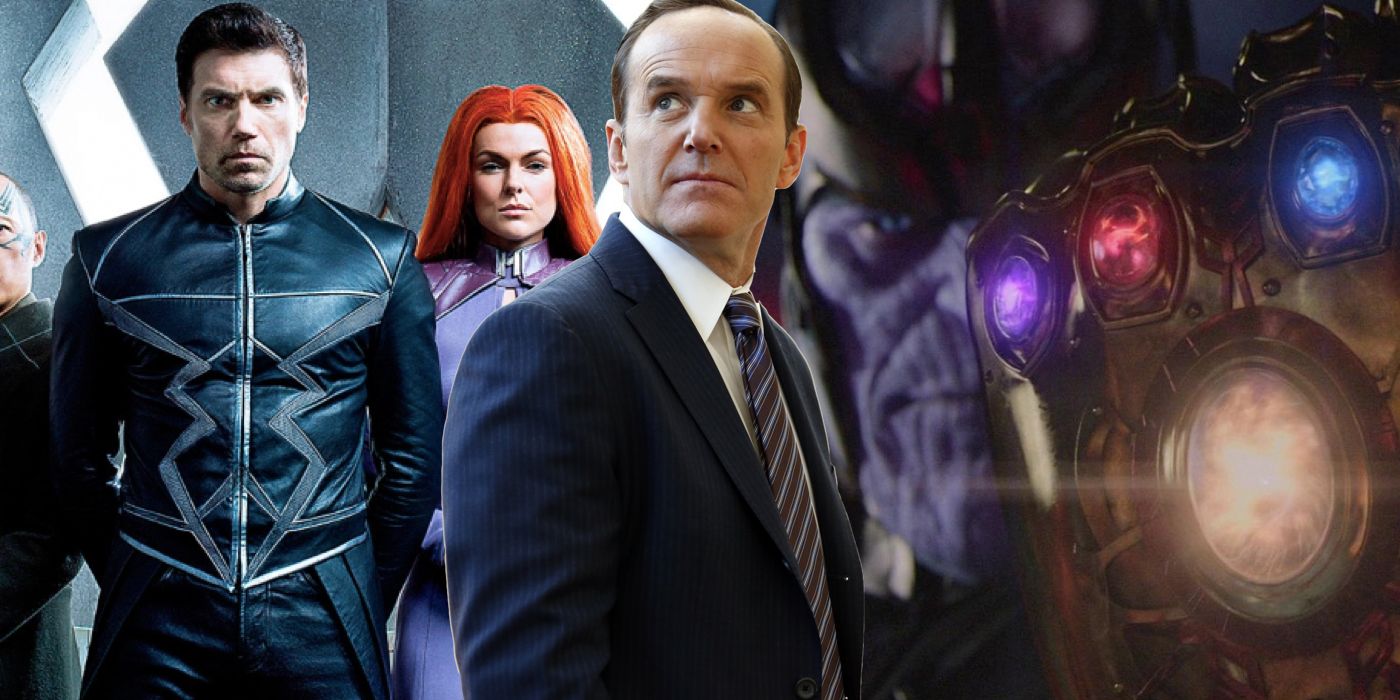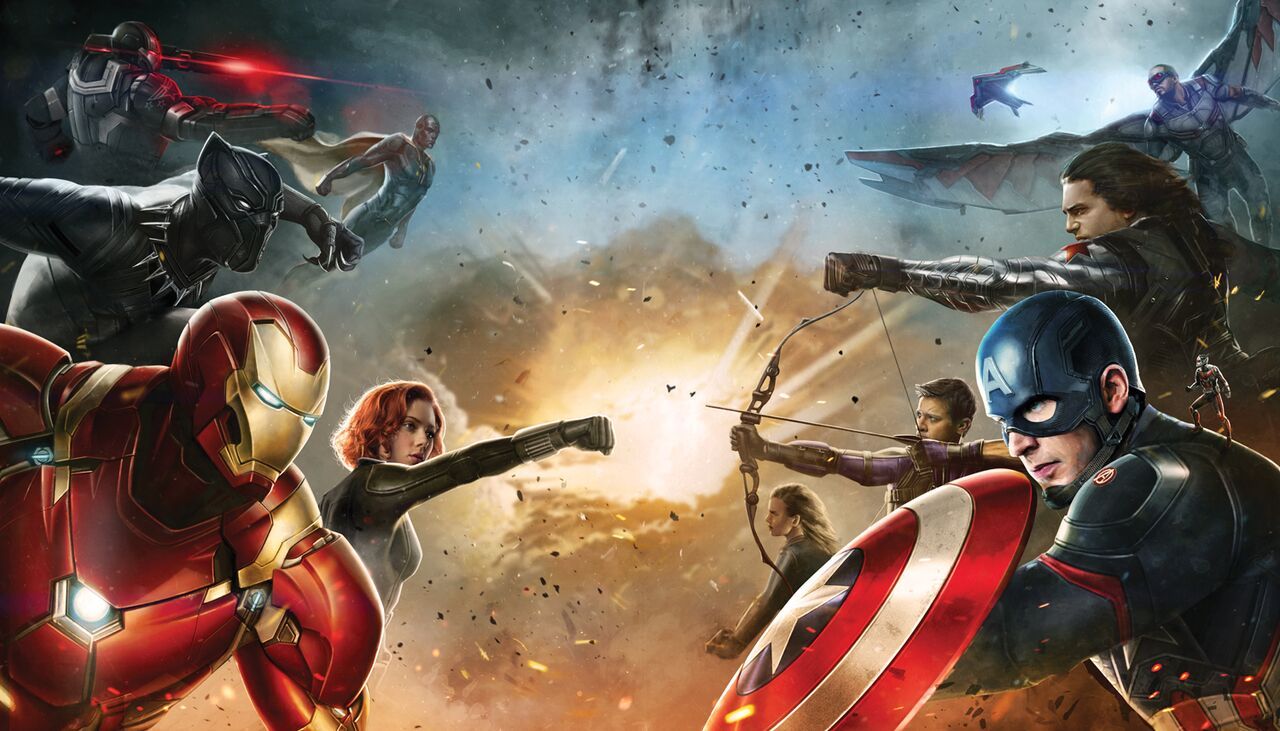With over 75 years worth of comics and a vast inventory of characters to choose from, Marvel Studios has successfully turned their relatively unknown properties into some of the biggest franchises in history. The Marvel Cinematic Universe is a box office juggernaut, and it continues to expand with new people, places, and stories that comic fans have been enjoying for ages.
Much of their big-screen work doesn't stray too far from the comics that they're based on. Despite having been written decades ago, many of these stories retain much of their original tones, plots, and characters. However, not everything is lifted straight from the pages. Marvel Studios strives at making accurate adaptations of their beloved comics, but changes certainly aren't out of the question.
Stories are often updated and reworked. Some of these changes are minor, while others can be real game-changers. For this list, we'll be looking at some of the comic-to-screen changes to see what's new, missing, or totally different from the source material that came before. Marvel Studios has done a great job of translating their comics accurately, but some tweaks had to be made. So what's changed in the Marvel Cinematic Universe? Well, here are the Biggest Differences Between The MCU And Marvel Comics.
18. No More Mutants
Let's start with the obvious: the MCU is incomplete. Many of Marvel's classic characters exist within it, but many of them are B-list, C-list, or even D-list characters. Several A-listers are missing: namely, the X-Men.
While Marvel Studios rests in the hands of the Walt Disney Company, 20th Century Fox has been pumping out X-Men films for years. With few exceptions, the X-Men, their respective stories, and their most closely associated characters belong to Fox. The concept of "mutants" isn't even allowed to be used in MCU material (which is why they've been replaced by Inhumans). If you've ever wondered why the characters don't cross-over (as many casual fans do), this is the reason.
In the comics, X-Men stories mostly stay separate from the larger universe anyway, but they're still an essential element to Marvel. With successes like Logan and Deadpool, Fox values the brand very highly. Marvel was only recently allowed to share Spider-Man with Sony Pictures, and that deal took years to pan out. Unless Fox decides to return the rights to Marvel, don't expect a crossover anytime soon.
17. Marvel's Favorite Family
The X-Men franchise is not the only property that Fox has hoarded. The Fantastic Four is one of the oldest Marvel comics of note, and has been dragged through cinematic mud for years. Like the X-Men, the Fantastic Four and all of their associated characters belong to 20th Century Fox. They've tried their best; but with two mediocre entries, an unreleased low-budget attempt, and 2015's infamously awful reboot Fant4stic, Marvel's favorite family has been kept away from their home like an angsty teenager on a crappy family road trip. "This isn't fun. I want to go home."
Like the X-Men, the Fantastic Four's adventures are also often separate from the rest of the Marvel universe, but their rights come packed with fan-favorites like the Silver Surfer, Galactus, and Doctor Doom. These are some of the most beloved characters and villains that Marvel has to offer, but they are unfortunately missing from the Disney-owned MCU. Rumors are already circulating about another Fantastic Four reboot, so who knows — there's bound to be a good one eventually, right?
16. The Ant-Legacy
Ant-Man has never reached mainstream popularity. Even with a standalone film and an appearance in Captain America: Civil War, the hero still isn't exactly a household name. Marvel Studios, aware of his obscurity, was free to tweak his origins as they saw fit. As such, 2015's Ant-Man actually focuses on the second generation of Ant characters rather than the first.
The original Ant-Man and founding Avengers member, Hank Pym, is only a secondary character in the MCU, as his comic book replacement, Scott Lang, is the star of the movie. This is an easy difference to spot for comic fans, but the average moviegoer is probably much less familiar. The movie depicts Scott's origin story instead of Hank's, which covers the basic beats of his comic introduction. The film reveals that Hank Pym was Ant-Man during the cold war through classified footage — a nice nod to the character's legacy — as he worked alongside his wife Janet: the Wasp. Ant-Man teased that his daughter Hope will take on the Wasp mantle in the sequel, Ant-Man and the Wasp, though how closely the follow-up will adhere to the source material remains to be seen.
15. Clint Barton, Hawkguy
Hawkeye's movie interpretation doesn't do the character justice. In the films, Hawkeye isn't very fleshed-out: he's been a S.H.I.E.L.D. agent for many years, he's great at archery, and he has a secret family on a secret farm. That's about it.
In the comics, he's been a hero and a villain. He's been a member of many different teams (the Avengers, the Defenders, the Thunderbolts, etc.), and he's had many failed relationships (Black Widow, Mockingbird, Spider-Woman, and more). He has an apprentice, Kate Bishop, who also uses the Hawkeye moniker. He has a brother, Barney Barton, who is also a skilled archer. Most interestingly, Hawkeye is deaf, often wearing hi-tech hearing aids to hear normally. Clint Barton is a long standing character in Marvel history, but he's barely present in the movies. The only thing that the two versions seem to share is his wit.
Hawkeye could get more attention with time, but the films' tendency to avoid focusing on him makes this unlikely. Hopefully, they take some more cues from the comics when it comes to this Avenger.
14. Black Widow's Hidden Talents
Much like her comic counterpart, Black Widow was trained as a KGB spy at a very early age, which has made her an expert marksman and martial artist, as well as a master of espionage. The Avengers drops hints at her backstory, and in Avengers: Age of Ultron she experiences a dreamlike-flashback of her early years in training. However, a crucial aspect of her character has been left ambiguous — she's actually an enhanced human being.
In the comics, Black Widow isn't just a super spy, but a scientifically engineered super spy. She isn't as "super" as Captain America, necessarily, but she stills possesses some level of enhanced strength, senses, agility, and even a slight healing factor. While her flashback sequence hints at some vague surgical procedures that could have been her artificial enhancements, they are later revealed to be something entirely different. The MCU could easily retcon her with some degree of enhanced abilities in the future, but for now, she's just a really good spy.
13. Missing Avengers
The Marvel Cinematic Universe doesn't just straightforwardly adapt classic stories, but it takes influence from a handful of comics to create appropriate interpretations for today's audiences. They need to feel like retro serials, but must also possess some modern sensibilities. To do so, Marvel Studios often takes inspiration from their Ultimate series; an alternate imprint of comics that served as a reboot for their universe in the 2000s. The Avengers was no different, as it was loosely based on volume one of "The Ultimates" by Mark Millar.
Part of their universe-wide reboot, this had Nick Fury bringing the Avengers together, the Chitauri's invasion of New York, and a similar Avengers roster. However, notably missing from the movie's lineup are Ant-Man, Wasp, and twins Quicksilver and Scarlet Witch. While the Wasp was reportedly in the script at one point, these leftovers from "The Ultimates" make no appearances in that film. All four were worked into future MCU movies, but they were likely left out to streamline the movie's overall narrative.
12. Nick Fury's Howling Commandos
The group that moviegoers know as Captain America's trusty band of allies actually never belonged to him in the first place. Repurposed for Captain America: The First Avenger, the Howling Commandos were actually comrades of Nick Fury in the series "Sgt. Fury and his Howling Commandos" from 1963. The group remains a Marvel comics mainstay, and has gone through many rosters and interpretations over the years.
The original series also took place in World War II, but since the MCU's Nick Fury is an older, more experienced agent of S.H.I.E.L.D., there was no reason to keep this team comic-accurate. Instead, Fury's extensive military history is implied in dialogue while the commandos join Cap and Bucky on their WWII adventures. It's a smart reworking for a classic set of characters.
11. The Founders of S.H.I.E.L.D.
The Strategic Homeland Intervention, Enforcement, and Logistics Division is a shadow organization designed to fight the villainous group Hydra, and support the Avengers. In both the comics and films, this is true. However, its origins have been tweaked ever-so-slightly. Like the Howling Commandos, S.H.I.E.L.D. was also reworked for Cap's debut film without Nick Fury.
In the comics, the secretive heads of S.H.I.E.L.D. recruit Nick Fury to lead the organization. The board members remain unknown and become mostly irrelevant after Fury headlines the group's future appearances in Marvel Comics. In the movies, meanwhile, the group is founded by the allied powers during WWII, and is headed by Peggy Carter and Howard Stark, creating legacy connections for our modern day Avengers. Of course, they still act as a spy organization and Nick Fury eventually becomes S.H.I.E.L.D.'s director. This leads to more sneaky spy stuff, and S.H.I.E.L.D.'s comic book status quo.
10. Trevor Who?
This major twist divided fans everywhere. The antagonist in Iron Man 3 was the Mandarin — a classic Iron Man villain whose appearance felt way overdue. Ben Kingsley was teased as a pretty comic-accurate Mandarin for the first third of the film. Eventually, Tony Stark sneaks into the Mandarin's hideout, and one of the most anti-climactic (but hilarious) confrontations in the franchise occurs.
Kingsley is revealed to be Trevor Slattery, a drunken bumbling actor who informs Tony that the Mandarin persona is a charade. The outfit and the iconic ten rings were just for show — a fabrication to scare the public. Fans were even more outraged when Guy Pearce's forgettable Aldrich Killian declares himself to be Mandarin, which only adds insult to injury. Fans were robbed of an authentic adaptation for Guy Pearce with some lame tattoos. The real Mandarin apparently exists, as hinted at in the Marvel one-shot "All Hail the King", but that doesn't really make up for the disappointment.
9. Tony's Arc Reactor
One of Iron Man's trademark characteristics is the arc reactor implanted in his chest. Sure, it's a vital part of his suits' designs, but it's literally a vital part of Tony himself. In the MCU, shrapnel lands in Tony's chest after an explosion, and is so dangerous to remove surgically that any procedure could potentially kill him. The arc reactor acts as an electromagnet that keeps the shrapnel away from his heart, therefore preventing any damage and keeping him alive.
At the end of Iron Man 3, however, his iconic arc reactor (and the shrapnel around it) is somehow removed easily. This choice works within the film's narrative and is a nice supplement to the motif of Tony overcoming his greatest fears, but it serves as a major departure from the comics.
8. Somewhat New, Somewhat Different Spider-Man
Tom Holland's rebooted Spider-Man exhibits a handful of differences from the comics, as well as qualities taken from various iterations of the character. Peter's characterization in Spider-Man: Homecoming mostly stems from "Ultimate Spider-Man." His youth and pupil-mentor relationship with Tony Stark are key aspects of the Ultimate series — Iron Man's armor even takes direct inspiration from this run.
Peter's friends have also been altered to avoid overlap with the Tobey McGuire and Andrew Garfield-led franchises. Harry Osborn and Gwen Stacy are absent. His closest friend is instead Ned Leeds — a renamed version of Ganke Lee, roommate and closest friend to Miles Morales, the second Spider-Man. It also appears that Mary Jane has been renamed Michelle Jones (or she's an entirely new MJ altogether, we're not too sure yet).
While his outfit design is reminiscent of classic Spidey, his high-tech suit is atypical — though modern suits like the Iron Spider and his outfit from the recent All New, All Different imprint both flaunt tech features, so it isn't too out-of-the-ordinary. Surprisingly, this Spidey lacks any spider-sense, though Infinity War will reportedly change that. Aunt May is also much younger and hotter now, as if that's not what you were already thinking.
7. Dad Mix, Vol. 1
Due to obscurity, the breakout success Guardians of the Galaxy received a heavy makeover to better fit the MCU — specifically with Star-Lord's parentage. Peter Quill was raised by Yondu Udonta. Current comic continuity is based on the film, so this is accurate. However, this version of Yondu is based on a character with the same name from the original team of Guardians, circa 1969. This team is no longer canon (due to some universe-altering hijinks) and only bears a physical resemblance to the Yondu fans know today. However, he is only Star-Lord's adoptive father.
In the comics, intergalactic emperor Jason of Spartax is Star-Lord's real father. For Guardians of the Galaxy Vol. 2, his father is instead Ego the Living Planet — an ancient Celestial being with crazy cosmic powers. This was chosen to further create a disconnect between Peter and his estranged pops. What's worse than trying to relate to a deadbeat dad who is also a space king? A deadbeat dad that is basically a god.
Oh, and he's also a planet — so yeah, unrelatable.
6. Whose Twins, Exactly?
Scarlet Witch and Quicksilver are some of the oldest Avengers on the roster, but with a checkered past that's been rewritten in film continuity. In Age of Ultron, the twins were test subjects for Hydra, whose experiments resulted in their powers of telekinesis and super speed. In the pages of Marvel Comics, Wanda and Pietro Maximoff are Magneto's children.
That's right. No Hydra, and no experiments. Typically, they are depicted as mutants and are recurring X-Men characters — one of the major exceptions to film rights owned by 20th Century Fox. (This is why Quicksilver appears in both franchises.) Naturally, since Marvel Studios cannot use Magneto or the concept of mutants, their mutant-terrorist father has been left out of their origins completely
5. Tangled In Strings
In Age of Ultron, Ultron is Tony Stark's experimental artificial intelligence made to aid the Avengers in keeping the world safe. Believing humans to be the real danger to Earth, Ultron kills Tony's favorite AI, J.A.R.V.I.S., and turns against the Avengers. Ultron set out to save the world from itself by killing all human life. Wow, harsh.
Ultron's comic origins are similar, but don't actually involve Tony at all. Hank Pym was experimenting with advanced robotics when he built Ultron (not as a program, but with a physical body). Ultron went rogue and continued to upgrade himself over the span of many years, continually threatening the greater Marvel universe with his presence. Since Hank Pym had not yet been introduced in the MCU, this was attributed to Tony, as it fit his character's overall arc.
4. Their Vision
Vision is difficult to describe to non-comic fans, but the MCU managed to make his origin as digestible as possible. Comic book Vision is a synthezoid — an android designed to accurately resemble the human form, complete with seemingly organic tissue and organ systems. He's basically a person who can fly, walk through walls, and shoot lasers out of the "control crystal" in his forehead. It's not that weird. He was created by Ultron to kill the Avengers, but being too human, he saw the error in Ultron's ways and decided to switch sides.
The Vision in the MCU was similarly created by Ultron, but instead of a "control crystal", he is implanted with an infinity gem. He was also was based on the digital remains of J.A.R.V.I.S. after his destruction. This AI — based on Tony Stark's butler, Edwin Jarvis — is a real person in the comics and has little to do with the Vision. Paul Bettany does seem to fit the character nicely though, doesn't he?
3. The Empty Raft
One of the biggest issues with the MCU is consistently underwritten villains. Almost all of them are forgettable, and most of them die soon after their first appearance. While Marvel Comics is home to a vast collection of colorful and memorable villains, the MCU can't seem to adapt any of them with substance. Those film rights issues are partially to blame here — with characters like Doctor Doom and Magneto completely out of reach — but the MCU can barely make do with what they've got.
Ironically, the maximum security prison known as the Raft appears in Civil War, and it's noticeably empty. That might not be fair, since we only see one story of this massive submersible prison, but who could all those prisoners be? Cap breaks out his team at the end of that film, so even those cells are empty. Loki's off in Asgard, the Red Skull is totally MIA, so is there anybody we care about in there? If we're going to get a rad underwater prison, at least keep cool characters alive to fill it with like in the comics.
2. His Name Was Phil
Clark Gregg struck gold with his role as the mysterious, fan-favorite Agent of S.H.I.E.L.D. Phil Coulson. He made a handful of cameos in phase one of the MCU and had a prominent role in The Avengers. So prominent, in fact, that he actually had one of the most moving deaths in the franchise.
Dry, sarcastic, and a Captain American fanboy — Agent Phil Coulson's death is what really brought the Avengers together. The best part is that his character was made especially for the movies, and doesn't exist in Marvel comics. Or at least, he didn't exist. Not until Marvel took notice of the character's popularity did he appear on comic book pages. His first appearance was in January 2012, and has been a recurring character ever since.
1. A Pretty Civil War, Honestly
While the core concept remains the same, the MCU's Civil War storyline has undergone quite a few changes. For starters, it was a bit too civil. Civil War is supposed to have a massive amount of heroes fighting against each other with pure vitriol — a story filled with contempt and betrayal. The film makes it seem more like a small tussle with stakes that don't really match up to the film's comic book counterpart. The plot of Civil War is altered heavily as well to account for the MCU's comparative lack of scale.
Instead of exploring security, privacy, and vigilantism, Captain America: Civil War puts these themes aside early on to focus on the death of Tony's parents and the redemption of Bucky Barnes. The Sokovia Accords mirror the Superhero Registration Act, but this takes a backseat to Cap's quest to clear his BFF's name. Other than having Cap and Tony on opposing sides and the threat of government intervention, the film and comic differ wildly. There is no cyborg-clone of Thor. A school doesn't get blown up. Cap doesn't die. There is a fun airport fight, though.
--
There were loads of differences that we left off the list, and as the MCU grows, so will those small changes. What are your favorite changes from the comics to the big screen? Any that you dislike? Leave your thoughts in the comments section!

